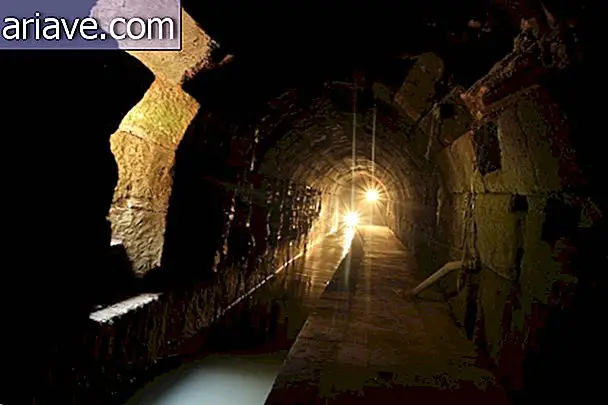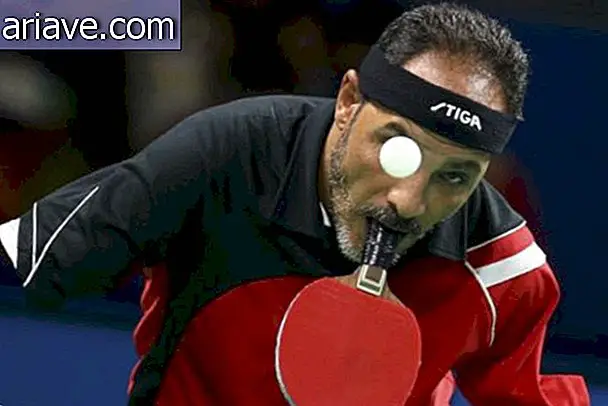Falcons Park: the bird of prey sanctuary that exists here in Brazil
Birds of prey - or prey - are the group of carnivorous birds that have specific hunting characteristics, such as sharp claws, curved beak powerful for tearing meat, extremely sharp eyesight and great flying power, “ tools ”that make these animals efficient and very agile when capturing their meals.

Birds of prey represent 10% of all birds we know in the world, and most species can be found here in Brazil. If you are a fan of these powerful creatures, then surely you need to know the Falcons Park, located 45 km from Aracajú, Sergipe.
Sanctuary
The Falcons Park has an area of 3, 500 km² of Non-Governmental Organization (NGO) and is maintained by the duo formed by José Percílio and Alexandre Correia. The first to come headlong into this dream was Percílio, while Alexandre joined the project in 1999, starting a partnership that continues today.

But the story behind the project started long before! When Percílio was still only 7 years old, he was presented with a Carcará egg ( Caracara plancus ) and, after 28 days being hatched by a chicken, Tito, his first great friend, was born. Currently, Tito is 27 years old and lives in the Institute with more than 300 birds, including hawks, hawks, owls, bullocks, pigeons, etc.

It is important to highlight that the Falcons Park has the authorization and support of IBAMA for the breeding of captive birds and is a world reference in the management, reproduction and rehabilitation of these animals.
Rehabilitation
Many of the birds in the park were victims of human cruelty and rescued from ill-treatment, illegal captivity and anti-trafficking operations. Several even have mutilations. These creatures get there brought by IBAMA and Fire Department so that they receive the necessary care and can recover as best they can.

When they are brought to the place, the badly treated birds behave at a distance and are very afraid of contact with humans, but thanks to the dedication of all the Park staff, the animals soon feel safer and adapt to people's visits and manage. have their partial or full recovery, depending on the level of trauma suffered.

After completing the recovery period, some of the birds are given a chance to reintegrate into the wild. However, not all can go through this process and become permanent inhabitants of the Park, where they continue to receive daily care for a better quality of life. In addition, maltreated individuals also undergo captive breeding work, and the offspring have already exceeded expectations.
Focus on education
As for bird training, unlike the traditional falconry practiced in Asia and Europe, which trains animals to hunt alongside humans, the Park staff focuses on making people understand the true role of birds of prey in nature. and see them as predators with a fundamental role in the food chain - not as "bloodthirsty killers."

At the Institute, trainers identify and reproduce each bird's vocalization, creating a dialogue with the bird, transmitting commands of defense, attack, alert or even greetings through guttural sounds produced in the "language" of these animals. “The secret is in vocalization, ” explains José Percílio. “By identifying each sound the bird makes, we know what it wants. There are sounds of attack, petitioning and others that warn of people coming.

Three or four times a week, all of the Park's 32 trained birds fly on short trips in the so-called “fist-to-fist” exercise, where they travel long distances in free flight across the mountains. At the sound of the whistle or the trainer's own voice, animals simulate attacks on imaginary prey, and each species needs to carry out individual training, as only then will each species' needs be prioritized. Check out more images of the birds - recorded by Wildlife photographer Izalete Tavares - in the following gallery:














***
The Falcons Park is in the itineraries of Sergipe's ecotourism tours and, besides the birds of prey, visitors have the opportunity to take a guided tour in the Serra de Itabaiana National Park, with its borders.
The Park does not work in an exploratory way, but needs funds to take care of the birds as it does not receive government support to maintain it. Therefore, there is a small access fee. For more information on location, schedule, visit times and fees, be sure to access this link!
* Via advice.











